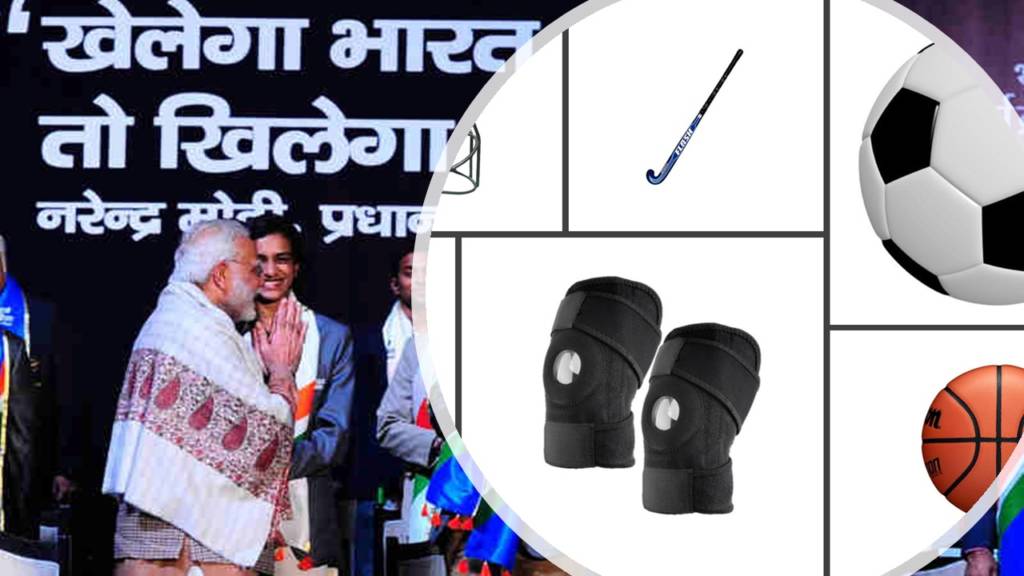When PM Modi declared open the inaugural Khelo India School Games two years ago, the move was largely seen as a historic effort to encourage the Indian youth towards athletics and sports. It emerged as an attempt to promote competitive sports among youngsters.
Two years down the line, the national initiative is yielding some rich dividends for the Indian economy in the form of an unprecedented boost in the country’s sports business industry.
India has always been a prolific market for the sports business industry. The advent of cash-rich sports leagues such as Indian Soccer League, Indian Premier League and Premier Badminton League to name a few over the last one decade or so have created immense scope for commercial viability and sponsorships, which has ultimately benefited the sports business industry in India.
In the backdrop of a healthy sports business industry, the Khelo India initiative has come as just the kind of boost that the industry needed to sustain and bolster its growth even further.
The Khelo India scheme creates provision for an annual scholarship to the tune of Rs. 5 lakh to 1,000 young athletes for a period of eight years at a pan-India level. Therefore, India is pushing and financing young, impressive talent. This is going to generate massive demand for sports equipments, facilities, etc. that will ultimately benefit the sports business industry.
Funds to the tune of Rs 156.83 crore has been extended to various sports academies in India, which is a huge push in terms of demand for the sports economy in India.
The pan-India initiative has started showing positive results already. The major urban centres of the Indian sports economy are showing signs of a dramatic revival and unprecedented boost in terms of growth trajectory.
Take, for instance, the example of Jalandhar- the sports city of India. Last year, the Punjab city witnessed a growth of 25 per cent in sports goods manufacturing, a meteoric rise from the preceding year when the manufacture of sports goods grew at a rate of 10 per cent.
Ajaya Mahajan, chairman, Sports Goods Manufacturers and exporters association (SGMEA) attributes this growth to the Khelo India initiative. He said, “There is a lot of improvement in the growth of carbon fibre racquets, carbon fibre hockey sticks, cricket protective equipment and boxing equipment. Schools are a reason for domestic market pickup and people increasingly becoming sports-oriented because of Khelo India.”
Vikas Gupta, managing director at Jalandhar-based Soccer International Private Ltd. said, “There is big-time investment happening in sports infrastructure such as stadiums. This has a gestation period. However, schools have become big buyers as now kids have to participate in sports. There is a 5-10% increase in business.”
The increased participation of school-going children in sports is at the core of sudden and unbelievable growth in the sports economy of Jalandhar. This is where the Khelo India initiative comes into the picture.
It is particularly the U-17 school students segment of the pan-India initiative that is fuelling the growth of the sports business industry by encouraging widespread participation of school-going students in sports and athletics.
Not only Jalandhar, even Meerut, the other big centre of sports equipment manufacturing in India has also benefitted substantially from the Khelo India initiative. It is believed that Meerut and Jalandhar together make up 75 to 80 per cent of the total sports equipment production.
Meerut’s sports equipment manufacturing industry too hopes to ride on the Khelo India programme. According to Amber Anand, Director of Nelco Sport, Meerut has seen the emergence of top brands over the last few years. These brands are making it a global impact in several sports such as athletics and track and field gear, table tennis and niche fitness equipment.
A remarkable feature of the recent spurt in the growth of the sports industry has been how the focus has moved beyond cricket- a phenomenon that is visible in the case of Meerut as well.
The sports manufacturing hub in Uttar Pradesh is traditionally renowned for the production of high-quality cricket gear. But it is interesting to note that Meerut had also supplied the shot puts and javelins that Swapna Barman (heptathlon), Tajinderpal Singh Toor (shot put) and Neeraj Chopra (javelin throw) used to win their gold medals during the Asian Games in 2018.
Puneet Mohan Sharma, president of the All India Sports Goods Manufacturers Federation too stressed upon Meerut’s prowess in manufacturing cricket goods, and added, “But new and niche sectors such as gym equipment and weights for athlete training are providing companies here an opportunity to diversify and reach out to new markets globally. Cricket, after all, is restricted to only 125 countries.”
A June 2018 India Briefing report from business advisory firm Dezan Shira & Associates had disclosed that the Indian sports industry is moving beyond the sport of cricket towards a wide variety of other sports. This has proved a major shot in the arm as far as growth in viewership, participation, and sports-related industries is concerned.
The report had also added that the phenomenon of the Indian sports industry focussing beyond cricket has opened up new avenues for Indian investors such as brand building, development of sports infrastructure, etc.
The advent of several non-cricket cash-rich sports leagues had a role to play in diversification of the Indian sports industry. The process has been further boosted by the Khelo India initiative that is nurturing and promoting young talent to take up a variety of sports.
The Khelo India initiative thus started as an effort to attract young sporting talent in India. The country has moved in the right direction, but it has also led to what can be described as rather unexpected gains in the form of a dramatic revival of the country’s sports industry.
